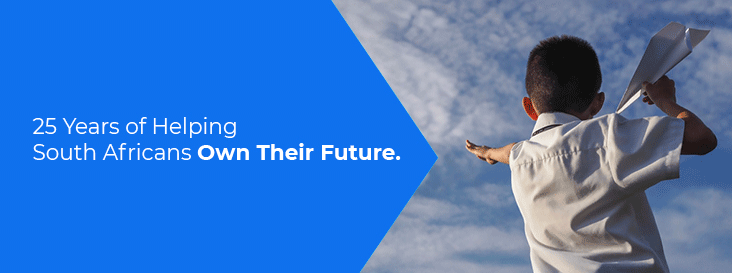How a tropical island experiment, a writers’ strike, and a collapsing TV economy gave birth to modern day reality television.
The year was 2000. Pants were worn low, bean bags were everywhere, and you had to hit the number 6 three times on your Motorola Razr to type a letter “o”. Most people were just happy to have survived the Y2K bug. Little did we all know that our lives were about to be permanently altered – because this was the summer that Survivor premiered.
Before this moment, prime-time television was either rehearsed laughter in sitcoms, carefully plotted twists in dramas, or polished faces on talk shows. Then CBS sent sixteen strangers into an island wilderness and waited for a different kind of storytelling to unfold. Instead of a script, the world tuned in to the slow, combustible chemistry of humans under pressure.
It is tempting to tell the story of Survivor as a show that arrived fully formed and changed everything overnight. The truth is messier and more interesting. Reality television had been inching its way into American homes for years. Fox’s Cops and America’s Most Wanted had already blurred the line between reportage and entertainment while MTV’s The Real World (born of the early 1990s) had proved that unvarnished young lives could sustain narrative arcs across a season. But Survivor altered the gravitational pull of the medium. It turned unscripted spectacle into an engine that could fill schedules, attract advertisers, and redefine what networks thought viewers wanted. In short: it launched reality TV.
The market that found its formula
When the finale of the first season of Survivor aired, 51 million viewers tuned in. For context, that number belonged to an era when network television still measured cultural gravity in tens of millions of viewers per event; that year, it was a rating only eclipsed by the Super Bowl. The ratings translated into advertising gold, with CBS reportedly charging $600,000 per 30 second ad slot during the finale. The rest of the industry quickly sat up and took notice.
But Survivor didn’t just succeed because it was entertaining; it worked because it arrived at the exact moment the old model of television was collapsing under its own weight. By the late 1990s, scripted programming had become prohibitively expensive. Networks were paying millions per episode to retain stars, and writers’ guild negotiations had grown increasingly fraught. The 1988 Writers Guild strike (one of the longest in Hollywood history at the time) had already exposed how vulnerable networks were to production shutdowns. Executives began quietly searching for formats that could bypass unions altogether – shows without scripts, without actors, and without the constant threat of collective bargaining.
When Survivor arrived, it offered the perfect economic solution. It required no name-brand talent, no residuals, and no writers’ rooms full of salaried professionals. The drama was human and unscripted, the labour non-union, the costs minimal. Reality television was a new genre, sure, but it was also a business model born out of financial necessity. It allowed networks to fill airtime year-round without the overhead of scripted production, and audiences, exhausted by formulaic sitcoms, devoured the novelty.
No surprise, then, that the following years felt like a chain reaction. CBS doubled down on the success of Survivor by launching Big Brother and The Amazing Race, while Fox answered with American Idol. By the mid-2000s, every major network had a version of reality that suited its brand – ABC had The Bachelor and Extreme Makeover: Home Edition, NBC ran The Apprentice and The Biggest Loser; while MTV pivoted from music videos to household sagas with The Osbournes and Newlyweds. The medium matured not into a single shape but into many: competition, voyeurism, makeover, talent. In 2003 the Emmys created categories to acknowledge the impact. Reality TV had shifted from a curiosity into an industry.
How real is “real”?
From the start, the producers behind Survivor wanted to manufacture chaos. Their original plan for the show’s opening was to literally sink the ship that the contestants were on and have them swim to the island. When that proved logistically impossible (and more than a little dangerous), they settled for the next best thing: loading sixteen people onto a vessel, announcing that they had ten minutes to grab whatever they could carry, and sending them off in rafts toward an island. Things went wrong practically immediately: the waves were rougher than expected, contestants were vomiting everywhere, and what looked like a short distance required more than two hours of rowing to cover. The cameras kept rolling, capturing it all.
The island itself was more wilderness than set. There were no amenities, no real shelter, and, as it turned out, not even sleeping quarters for the crew. Cameramen, sound operators, and producers found themselves camping on the same beaches as their subjects, with their notebooks dissolving in the humidity and their nights interrupted by rats and snakes crawling over their legs. Both cast and crew lost weight, battled parasites, and suffered heat exhaustion. By the end of the 40-day shoot, many were physically wrecked and emotionally frayed.
This is what made Survivor so strangely compelling: its reality was constructed, but the suffering wasn’t. The conditions forced out real tears, real hunger, real desperation. A confession filmed in the middle of that chaos might have been edited for drama, but the emotion itself was authentic; the product of exhaustion and exposure as much as narrative design.
That’s the sleight of hand that defines reality television as a whole. The illusion of pure spontaneity is built on careful orchestration, but the emotions it captures are not false. The cameras didn’t create the breakdowns, but they did make sure the breakdowns were seen. What audiences respond to isn’t factual accuracy, but emotional truth – the visceral, uncomfortable immediacy of watching people pushed to their limits.
The people left to pick up the pieces
The consequences of manufactured authenticity are both personal and institutional. Contestants returning from seasons of Survivor are often in poor physical and emotional shape. Parasites, weight loss, and psychological strain are not rare. The first season of Survivor had “therapists” on set that contestants could request to talk to – but these therapists were on the CBS payroll, and therefore occupied a conflicted place between care and production priorities. After months of deprivation and public scrutiny, many former players described an unsettling sense of betrayal. They had been invited to participate in an experience that promised adventure and exposure, only to find themselves subject to manipulation in service of entertainment.
That ethical tension followed the shows into the culture at large. Reality television has normalised certain types of voyeurism, and it raised questions about consent in pressured circumstances and the responsibilities producers hold toward participants. Those questions have still not fully been answered, even as 57% of new TV programming today is classified as reality TV. Since 2000, at least 38 reality TV participants have died by suicide. The genre built its empire on access to the most vulnerable parts of human experience, but in doing so, it forced us to confront an uncomfortable truth: the line between storytelling and harm is far thinner than television ever let on.
What it left behind
You could argue that Survivor taught television to trade in intimacy. Audiences learned to care about ordinary people in extraordinary situations, to root for underdogs, to analyse social gameplay with the same intensity critics applied to scripted narratives. The genre diversified, hybridised, and metastasised into shows about talent, transformation, and competition. It reshaped summer programming and rebalanced industry economics in favour of formats that could be produced quickly and cheaply.
Two decades on, Survivor itself endures, its edges refined, its craftsmanship slicker, its players more strategic and media-savvy. The island is less of an accident and more of a calibrated laboratory (rumour has it the crew have actual quarters these days). Yet the fundamental equation remains the same: remove the comforts that prop up civilized behaviour, challenge people to meet one another in a confined social field, and let the human drama do the rest.
After all these years, the tribe still speaks. We listen – sometimes appalled, often delighted – and we keep coming back for more, not because we believe everything we see, but because, for a few hours a week, television gives us a mirror that is discomfitingly human. There’s just far more reality TV to choose from these days.
About the author: Dominique Olivier

Dominique Olivier is the founder of human.writer, where she uses her love of storytelling and ideation to help brands solve problems.
She is a weekly columnist in Ghost Mail and collaborates with The Finance Ghost on Ghost Mail Weekender, a Sunday publication designed to help you be more interesting. She now also writes a regular column for Daily Maverick.
Dominique can be reached on LinkedIn here.





Interesting article, that’s why we have so many reality shows now.
I can’t wait to read Dominiques weekend column . It’s witty, insightful and informative.She has an uncanny art of writing that is gripping and awakens one to the fact that words ,if put together well, makes reading so pleasurable and exciting.